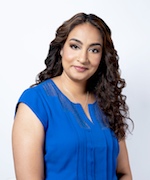 Geetha Murali is the chief executive officer of Room to Read, an organization working for a world in which all children can pursue a quality education that enables them to reach their full potential and contribute to their communities and the world.
Geetha Murali is the chief executive officer of Room to Read, an organization working for a world in which all children can pursue a quality education that enables them to reach their full potential and contribute to their communities and the world.
Geetha has 18 years of experience across the corporate and nonprofit sectors from pharmaceutical companies GlaxoSmithKline and Chiron to educational technology programs like the Digital Equalizer Program (part of the American India Foundation) and Adobe Youth Voices (an arm of Adobe Systems).
I spoke with Geetha about how Room to Read is creating a more literate and empowered global population, as well as how her organization is partnering with Silicon Valley.
Tell us what Room to Read is, and specifically about its initiatives in early literacy and girls’ secondary education.
Room to Read is a global organization transforming the lives of millions of children in low-income communities by focusing on literacy and gender equality in education. Since our founding in 2000, we have reached upwards of 12.4 million children in 16 countries around the world, helping unlock their full potential through education. Our innovative model focuses on deep, systemic transformation within schools during two time periods that are most critical in a child’s schooling: early primary school for literacy acquisition and secondary school for girls’ education.
Our Literacy Program publishes children’s books in local languages, equips schools with stocked libraries, and trains educators and librarians. By the end of 2018, we’ll have published a little less than 1,500 children’s books in 35 local languages, training around 10,000 educators throughout the year. We want to ensure that children not only have access to a quality education but are in a child-friendly learning environment that enables them to become life-long, independent readers. The Girls’ Education Program ensures girls complete secondary school and have the skills to negotiate key life decisions. We offer girls life-skills training, mentoring and need-based material support while also increasing advocacy for girls’ education among their parents, school staff and communities.
Ultimately, we work toward a world where illiteracy doesn’t exist, and every girl gets an education enabling her to choose her own life’s path. That’s our vision of world change.
One thing you’ve done at Room to Read is to increase funding through private partnerships. What are some examples of innovative partnerships and why should tech companies partner with Room to Read?
Room to Read has had the opportunity to partner with a variety of companies in different capacities. We were founded in San Francisco, and like many organizations with Silicon Valley roots, we are innovative and iterative, continuously learning and enhancing our programs to be more effective and impactful in our reach.
Our partnerships have spanned the tech industry, finance industry, international development sector, and even hospitality and beauty. Currently, we’re partnering with Google.org to create a platform that promotes literacy in Indonesia by increasing access to digital children’s stories. We’re also working with the Ikea Foundation to reach almost 70,000 additional girls in India through the Girls’ Education Program, expanding our previous partnership in Ikea’s Let’s Play for Change campaign.
What sets Room to Read apart and can be the deciding factor in our partnerships is that we know how to leverage our partners’ strengths to solve for illiteracy and gender inequality. We’ve made that clear over the past two decades of our work. We have the solutions. We have the data-backed proof that our programs work. Children in our literacy program routinely read twice as fast as their peers in non-Room to Read schools. Room to Read’s Girls’ Education Program participants have a 96% advancement rate, with 70 percent going on to tertiary education or employment. So, for companies looking to partner with an organization to affect sustainable change, our impact and results speak for themselves.
In addition to your master’s and doctorate degree in South Asian studies, you also have a master’s degree in biostatistics. How does Room to Read collect and use data to measure its success?
As you mentioned, I am a trained statistician, so data, metrics and evaluations are incredibly important to me. Room to Read holds itself accountable for showing the real, measurable results of our work to improve children’s learning and life outcomes. Every year, through our global research, monitoring and evaluation team, we collect data against a set of global indicators at more than 3,500 schools to allow for effective program evaluation. In our program schools, we measure indications like reading comprehension, oral reading fluency, advancement rate, graduation rate, books checked out and the number of books read per child.
We also conduct targeted research in both our literacy and girls’ education programs to ensure the effectiveness of our program delivery. For example, in Rajasthan, India, we’re currently conducting a first-of-its-kind external randomized control trial for 2,500 girls in 119 schools, and in Nepal, we’re finalizing an evaluation of 1,160 girls in 50 schools across two districts. These studies and trials not only put our work into context but provide a system through which we can both validate our results to external parties and ensure that our methods are tailored to be highly effective and impactful.
M.R. Rangaswami is co-founder of Sand Hill Group and publisher of SandHill.com.
